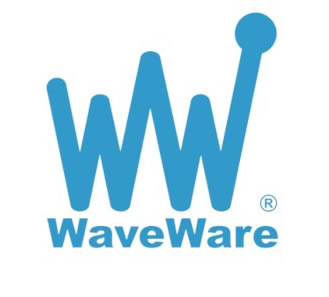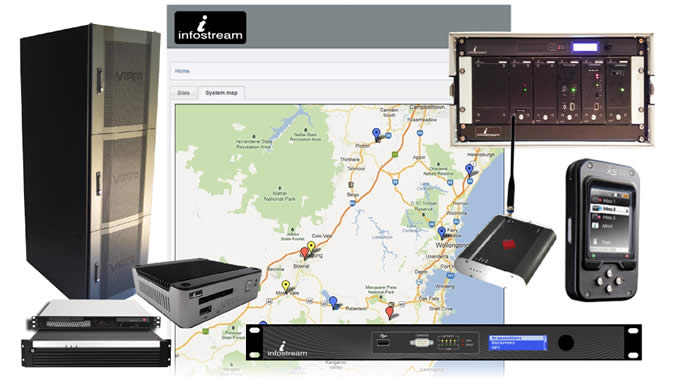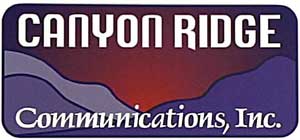|
Selected portions of the BloostonLaw Telecom Update, and/or the BloostonLaw Private Users Update — newsletters from the Law Offices of Blooston, Mordkofsky, Dickens, Duffy & Prendergast, LLP are reproduced in this section with the firm's permission.

| BloostonLaw Telecom Update |
Vol. 18, No. 1 |
January 7, 2015 |

HAC Report Due January 15; Revised Rules In Effect
The next Hearing Aid Compatible (HAC) reporting deadline for digital commercial mobile radio service (CMRS) providers (including service providers and resellers of cellular, broadband PCS, AWS and/or 700 MHz band services) is Thursday, January 15, 2015. In a significant change from last year, for Tier II and Tier III carriers, 700 MHz band devices and LTE/WiMAX air interfaces are no longer exempt from the HAC compliance standards as of October 17, 2014. All service providers subject to the commission’s HAC rules — including companies that qualify for the de minimis exception — must participate in annual HAC reporting. To the extent that your company is a provider of broadband PCS, cellular and/or interconnected SMR services, if you are a CMRS reseller and/or if you have plans to provide CMRS using newly licensed (or partitioned) AWS or 700 MHz spectrum, you and your company will need to be familiar with the Commission’s revised rules.
Headlines

FCC Expected to Vote on Net Neutrality Rules at February Open Meeting
Multiple news sources reported this past week that FCC Chairman Tom Wheeler intends to have the FCC vote on Net Neutrality rules at its February open meeting.
On January 2, the Washington Post reported that Chairman Wheeler told the other Commissioners before the holiday that he intended to “circulate a draft proposal internally next month with an eye toward approving the measure weeks later.” According to the Post, the rules to be circulated are intended to keep large broadband providers like Verizon and Comcast from speeding up or slowing down some web sites compared to others. A spokesperson for the FCC reportedly declined to comment on the Chairman’s communications, but did confirm the February timeline.
Net Neutrality has been a polarizing issue in recent months. Back in November, President Obama called upon the FCC to “make it clear that whether you use a computer, phone or tablet, Internet providers (ISPs) have a legal obligation not to block or limit your access to a website,” and further called for the classification of the Internet as a utility. Rural service providers have gone on record emphasizing the need for the interconnection obligations of Title II’s Sections 251 and 252, but have not gone so far as to call for full Title II regulation. Large providers like Verizon have generally supported the use of Section 706, which would put the FCC in an oversight role of an otherwise-unregulated Internet service industry.
FCC Makes it Easier to Certify RF Equipment
On December 30, the FCC issued a Report and Order updating the Commission’s radio frequency (RF) equipment authorization program to expand the use of Commission-recognized Telecommunications Certification Bodies (TCBs) as a faster and less expensive way to certify equipment. The TCB program up until now allowed equipment manufacturers to go to a private sector certification contractor rather than going through the full FCC Equipment Certification process, but only for certain categories of equipment. The new rules essentially outsource the entire certification process to the TCBs, in the name of facilitating the more rapid introduction of new and innovative products to the market while ensuring that these products do not cause harmful interference.
Specifically, the new rules:
- Discontinue FCC acceptance of applications for equipment Certification of RF equipment and instead permit TCBs to process and grant all applications for Certification;
- Codify a pre-grant approval procedure that TCBs must currently follow when certifying equipment based on new technology that requires consultation with the FCC;
- Clarify a TCB’s responsibilities in performing post-market surveillance of products it has approved;
- Specify steps for addressing instances of deficient TCB performance, including appropriate sanctions for deficiencies that do not warrant rescinding a TCB’s authority to issue a grant of Certification;
- • Modify the rules to reference new standards used to accredit TCBs that approve RF equipment under Part 2 of the Commission’s rules and terminal equipment under Part 68 of the Commission’s rules;
- Require accreditation of all laboratories that test equipment subject to any of the certification procedures under Part 2 of the Commission’s rules and codify a procedure through which the Commission currently recognizes new laboratory accreditation bodies;
- Update references to industry measurement procedures in the Commission’s rules; and
- Provide greater flexibility under the Office of Engineering and Technology’s (OET) existing delegated authority to enable it to address minor technical issues that may be raised when updating to the latest versions of industry standards that are referenced in Parts 2, 5, 15, and 18 of the Commission’s rules.
Until now, TCBs were generally not allowed to certify new technologies, because such situations often involved the interpretation of what may be vague aspects of the FCC rules and policies. The FCC will overcome this obstacle by identifying certain scenarios where the certifying body will be required to consult with the FCC’s Office of Engineering and Technology (OET) before certifying a device that raises unique issues. In rare cases, OET can require submission of a sample device to the FCC (i.e., similar to the old system). TCBs will have authority to rescind a certification they issued within 30 days, if they conclude that they got it wrong; however, they cannot rescind a certification issued by a different TCB.
Comment Deadlines for Technology Transitions NPRM Established
On January 6, the Notice of Proposed Rulemaking (NPRM) in which the FCC sought comment on proposals to update rules on customer premises equipment (CPE) backup power, copper retirement, and Section 214 discontinuance appeared in the Federal Register, establishing a comment deadline of February 5 and a reply comment deadline of March 9.
As we reported in the December 3 edition of the BloostonLaw Telecom Update, the FCC is seeking comment on, among other things:
- how to ensure CPE has sufficient functionality in the event of a power outage;
- which communications services should fall within the scope of any CPE backup rules and what services should be considered “minimally essential” for purposes of continuity of power;
- what steps providers should be required to take to maintain continuity of power for CPE;
- whether to define “retirement” of copper to include removing and disabling of copper loops, sub-loops, and the feeder portion of loops;
- how to address allegations that in some cases incumbent LECs are not adequately maintaining their copper facilities that are not yet retired;
- • whether and how the FCC should take action to promote the sale or auction of copper prior to retirement;
- whether the adoption of best practices can help address the need for reliable backup power; and
- what would constitute an adequate substitute for a retail service discontinuation, and on better defining the scope of its section 214(a) authority (particularly in the context of wholesale services).
Carriers interested in filing comments in this proceeding should contact the firm for more information.
Community Connect Grant Application Filing Window Opens; Applications Due Feb. 17
The application window for FY2015 Community Connect grant funding opened last month and applications must be submitted no later than February 17 to be considered for an award.
The Community Connect program, which is administered by USDA’s Rural Development office, is intended to spur broadband service in rural areas where it is “least likely to be available.” According to the USDA’s website, grant funds may be used to finance the following:
- The construction, acquisition, or leasing of facilities, including spectrum, land or buildings, used to deploy service at the Broadband Grant Speed to all residential and business customers located within the Proposed Funded Service Area (PFSA) and all participating Critical Community Facilities, including funding for up to 10 Computer Access Points to be used in the Community Center.
- The improvement, expansion, construction, or acquisition of a Community Center and provision of Computer Access Points. Grant funds for the Community Center will be limited to 10% of the requested grant amount or $150,000; and
- The cost of providing the necessary bandwidth for service free of charge to the Critical Community Facilities for 2 years.
Each project is eligible to receive up to $3 million in grant funding. Eligible entities include incorporated organizations; Indian Tribes or Tribal Organizations; state or local units of government; and cooperatives, private corporations or limited liability companies organized on a for-profit or not-for-profit basis.
BloostonLaw attorneys are experienced in preparing grant applications and are available to assist companies interested in applying for Community Connect funding.
Windstream Seeks Declaratory Ruling on DS1/DS3 Unbundling Obligations
On December 29, Windstream filed a Petition for Declaratory Ruling asking the FCC to “confirm that an incumbent local exchange carrier’s obligations to provide DS1 and DS3 capacity loops on an unbundled basis are not altered or eliminated either by replacement of copper with fiber or by the conversion of transmission from TDM to Internet Protocol format.” Comments are due on February 5 and reply comments are due on March 9.
According to the Petition, the question arises from recent assertions by AT&T and Verizon that they are no longer obligated to provide unbundled DS1 and DS3 capacity loops when they retire copper and/or transition to IP. Specifically, Verizon has apparently stated in recent notices of intent to retire copper facilities that after the retirement it will “no longer be required to offer UNEs or other services over copper facilities,” and that it “will offer to requesting carriers a 64 kbps voice-grade channel over fiber loops,” with no mention of unbundled access to DS1 and DS3 capacity. AT&T also has claimed that there is “no high capacity loop UNE requirement in an all-IP environment,” and has reportedly disavowed any plans to ensure that the access provided “is functionally equivalent to that provided immediately before the experiment” through unbundling.
Windstream argues that there is “no justification for failing to apply these rules during and after the IP transition without a showing—as would be required in support of a forbearance request—that changed conditions undermine the policy rationale underlying the loop unbundling rules.”
Law and Regulation

FCC Grants Request for Extension; Responses on USTelecom Petition Due Jan. 23
On December 30, the FCC’s Wireline Competition Bureau issued an Order granting Public Knowledge’s Request for Clarification or Extension of Time to respond to USTelecom’s Petition for Reconsideration of the November 25, 2014 Declaratory Ruling clarifying the circumstances in which a carrier must seek approval to discontinue a service. Responses to USTelecom’s Petition are now due January 23.
In the November 25 Declaratory Ruling, the FCC held, among other things, that a ‘service’ may no longer be defined by its provider (such as in a tariff) but instead must be defined by a “functional test that takes into account the totality of the circumstances from the perspective of the relevant community or part of a community.” According to USTelecom’s Petition, filed December 23, that ruling “changed the long-standing definition of what constitutes a ‘discontinuance, reduction, or impairment of a service’ for purposes of interpreting Section 214.” USTelecom argues that under the new requirement, “providers are unable to gauge what services or aspects of their products or services might require a section 214 filing to discontinue or grandfather” and are “left guessing whether particular changes they make to their services … trigger a 214 application process.” USTelecom also argued that a Declaratory Ruling is an improper vehicle for this sort of change, which it says should have been made (if at all) in a notice-and-comment rulemaking proceeding.
The FCC granted Public Knowledge’s Request because USTelecom styled its Petition as filed under Rule 1.429(f), which is the rule for Petitions for Reconsideration of rulemaking proceedings and gives parties 15 days to respond. Because the Petition seeks reconsideration of a Declaratory Ruling, however, it is a Petition for Reconsideration of a non-rulemaking proceeding, which only has a 10 day response period. Due to the high possibility of confusion caused by USTelecom’s mischaracterization, along with the fact that the majority of the response period in either scenario fell over the holiday season, the FCC extended the deadline.
Iowa Supreme Court Rules Telecom Tax Applies to VoIP Providers
On December 19, the Iowa Supreme Court issued a ruling that says companies that provide phone service through the Internet must be taxed the same as traditional telephone service providers. According to the ruling, VoIP providers operate “telephone lines” even though the calls are transmitted (at least initially) over broadband networks. As a result of the ruling, VoIP companies in Iowa are now subject to annual state property tax assessments on telephone companies, which are calculated based on the size of their service networks.
The ruling comes as a result of a challenge by Cable One Inc., an Arizona-based company that provides cable, internet and VoIP service in the Sioux City area, of two years’ worth of Iowa Department of Revenue assessments totaling $1.4 million, which Cable One argued didn’t apply because the company doesn't operate a telephone line. According to an article in the Washington Times, Justice Edward Mansfield “reached back 130 years in [the Supreme Court’s] own history” to overturn the decisions below, noting that the original law (which dated back to 1878) technically applied only to telegraph lines but that the Iowa Supreme Court later ruled that it also applied to telephones because they were similar technologies.
“The foregoing cases support the view that the definition of ‘telephone line’ adapts with changing technology, so long as there is a line and a comparable service is being provided,” Mansfield wrote. “Cable One operates a transmission system to carry voice signals from one fixed location to another over a series of wires; therefore, it operates a telephone line.”
Justice Mansfield said the decision was also “bolstered by Cable One’s own marketing material,” noting that the company told customers that its phone service was similar to a traditional landline.
FCC Form 477 Interface Accepting Data, Deadline March 2
On January 6, the FCC’s Wireline Competition Bureau issued a Public Notice announcing that the FCC’s Form 477 filing interface at https://apps2.fcc.gov/form477/login.xhtml is now accepting data as of December 31, 2014.
The Public Notice also indicates that the filing deadline for Form 477 is March 1, but since March 1 is a Sunday this year the filing will be due on March 2 pursuant to FCC rules. Due to the relative newness of the filing interface, BloostonLaw encourages its clients to take advantage of the open filing window to submit the data as soon as possible, in order to avoid technical difficulties and last-minute delays.
Industry

FCC Announces New Consumer Help Center
On January 5, the FCC issued a press release announcing the launching of a new online consumer help center that will “more efficiently link consumers to the information they need, as well as make it easier for consumers to file complaints and get responses to their concerns.”
According to the release, improvements brought about by the new help center include a streamlined complaint filing system; ready access to information that will “empower consumers to resolve some problems on their own’; better communications between consumers and FCC consumer representatives”; the ability for consumers to monitor complaints 24/7; and faster delivery of complaints to service providers.
The press release also indicates that the help center will “streamline the process of synthesizing and analyzing consumer complaint trends, and will make more of that data readily accessible to the public.”
The Consumer Help Center can be found at http://consumercomplaints.fcc.gov.
Deadlines

FEBRUARY 2: FCC FORM 502, NUMBER UTILIZATION AND FORECAST REPORT. Any wireless or wireline carrier (including paging companies) that have received number blocks—including 100, 1,000, or 10,000 number blocks—from the North American Numbering Plan Administrator (NANPA), a Pooling Administrator, or from another carrier, must file Form 502 by February 2 (as February 1 falls on a Sunday this year). Carriers porting numbers for the purpose of transferring an established customer’s service to another service provider must also report, but the carrier receiving numbers through porting does not. Resold services should also be treated like ported numbers, meaning the carrier transferring the resold service to another carrier is required to report those numbers but the carrier receiving such numbers should not report them. Reporting carriers are required to include their FCC Registration Number (FRN). Reporting carriers file utilization and forecast reports semiannually on or before February 1 for the preceding six-month reporting period ending December 31, and on or before August 1 for the preceding six-month reporting period ending June 30.
Calendar At A Glance

January
Jan. 8 – Reply comments are due on Robocall and Call-Blocking Issues.
Jan. 15 – Annual Hearing Aid Compatibility Report is due.
Jan. 19 – Reply comments on Part 22 Technical Changes are due.
Jan. 23 – Responses to USTelecom Petition for Reconsideration of Tech. Transition Declaratory Ruling due.
Jan. 29 – Deadline for Special Access Data Collection for large businesses with more than 1,500 employees.
Jan. 30 – Comments are due on the FCC’s Incentive Auction Procedures.
Jan. 31 – FCC Form 555 (Annual Lifeline ETC Certification Form) is due.
February
Feb. 2 – FCC Form 499-Q (Quarterly Telecommunications Reporting Worksheet) is due.
Feb. 2 – FCC Form 502 (Number Utilization and Forecast Report) is due.
Feb. 5 – Comments are due on Technology Transitions NPRM.
Feb. 5 – Comments are due on Windstream Petition for Declaratory Ruling on DS1/DS3 Access.
Feb. 6 – Comments are due on Unlicensed Use of TV Band and 600 MHz Band Spectrum.
Feb. 9 – Comments are due on the IntraMTA Petition for Declaratory Ruling.
Feb. 17 – Filing deadline for Community Connect grant applications.
Feb. 25 – Reply comments are due on Unlicensed Use of TV Band and 600 MHz Band Spectrum.
Feb. 27 – Deadline for Special Access Data Collection for small businesses with less than 1,500 employees.
Feb. 27 – Reply comments are due on the FCC’s Incentive Auction Procedures.
March
Mar. 2 – Copyright Statement of Account Form for cable companies is due.
Mar. 2 – Annual CPNI Certification is due.
Mar. 2 – FCC Form 477 (Local Competition & Broadband Reporting) is due.
Mar. 9 – Reply comments are due on Technology Transitions NPRM.
Mar. 9 – Reply comments are due on Windstream Petition for Declaratory Ruling on DS1/DS3 Access.
Mar. 11 – Reply comments are due on the IntraMTA Petition for Declaratory Ruling.
Mar. 31 – FCC Form 525 (Delayed Phasedown CETC Line Counts) is due.
Mar. 31 – FCC Form 508 (ICLS Projected Annual Common Line Requirement) is due.
Mar. 31 – International Circuit Status Report is due.
|






































 David George and Bill Noyes
David George and Bill Noyes
































